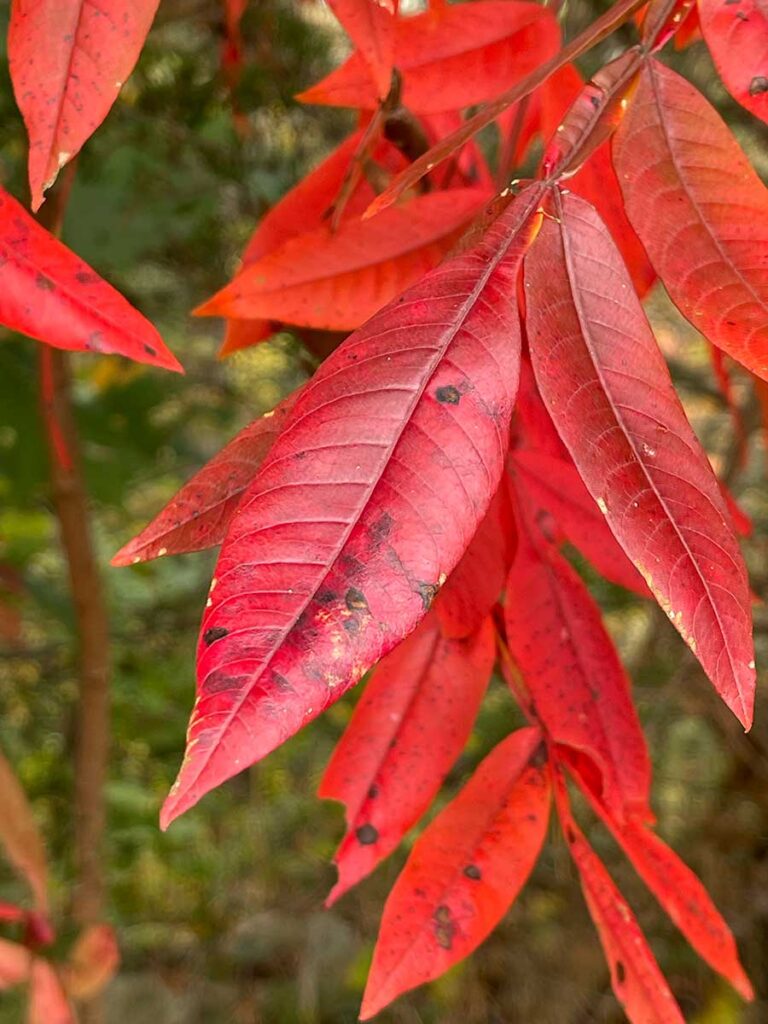Fall is a great time to enjoy the beauty of nature in your garden. Native shrubs offer various foliage colors, colorful berries, textures, and shapes that will add interest and color to your yard all season long. Add a few native shrubs for fall color into your landscape!
Witch hazel (Hamamelis virginiana)
In late fall and early winter, this tall shrub produces small, bright yellow flowers that look like an exploding firework and have a spicy scent. Witch hazel grows up to 20 feet and prefers rich, moist soils in part-shade. Its oval leaves also turn yellow in the fall, adding more fall color to your landscape. This shrub is native throughout the northeastern and southeastern U.S.
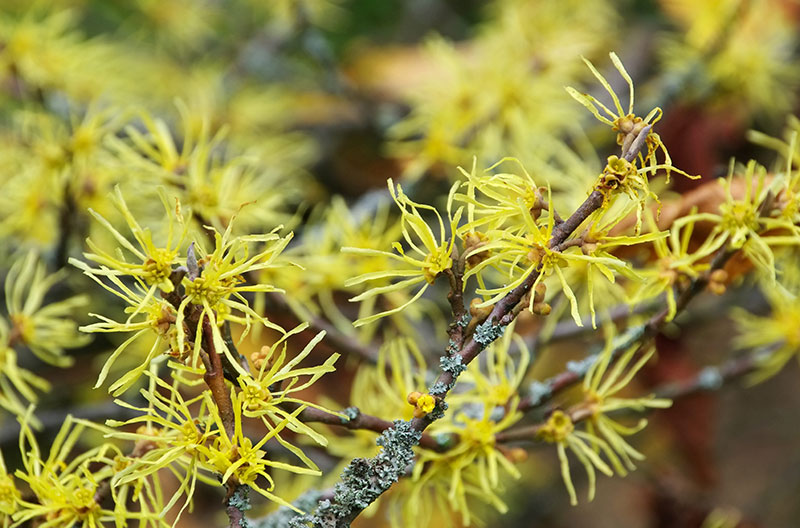
Strawberry bush (Eunonymus americana)
Also known as hearts-a-burstin, this native shrub adds a pop of orange and pink to your garden in the fall. The pinkish-red fruits open to expose the bright orange berries. The leaves of the plant turn dark red in the fall as well. Strawberry bush grows up to 12 feet and prefers moist soil. It grows best in part to full shade. This shrub is native to the eastern U.S. It’s one of my favorites because of its unique fruits.
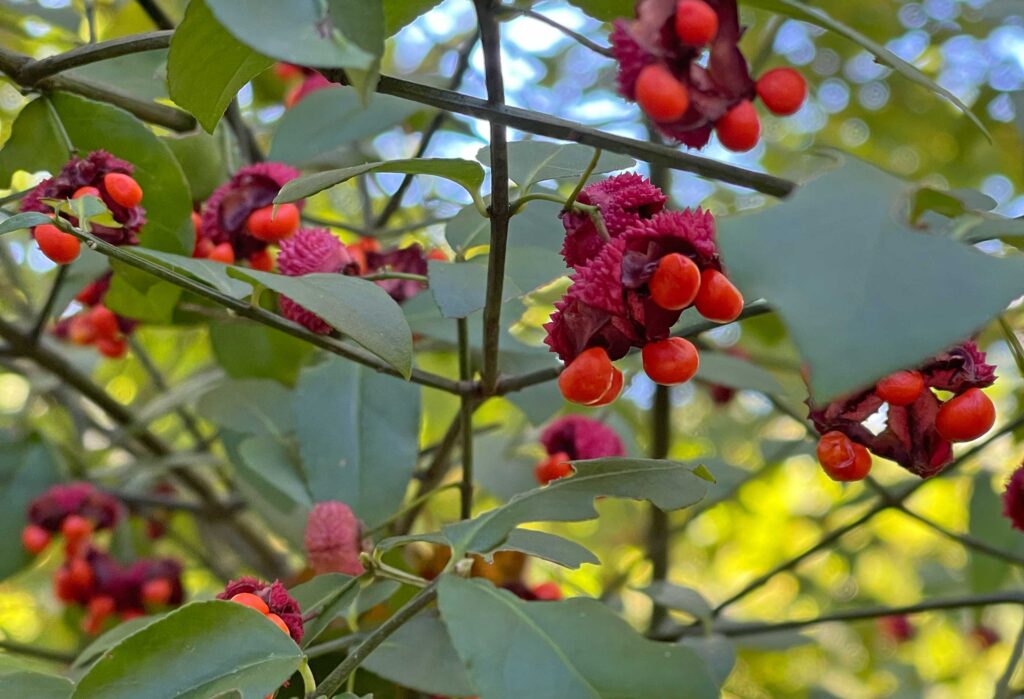
Buttonbush (Cephalanthus occidentalis)
From summer to early fall, the large, spiky white flowers of buttonbush are in bloom, attracting butterflies and other insects. In the late fall, these flowers turn into tiny red fruits, and the leaves of this shrub also turn red. Buttonbush adds a lot of fall color to your garden. This native shrub prefers moist soils and part-shade. It is native to the eastern U.S. and grows up to 12 feet.
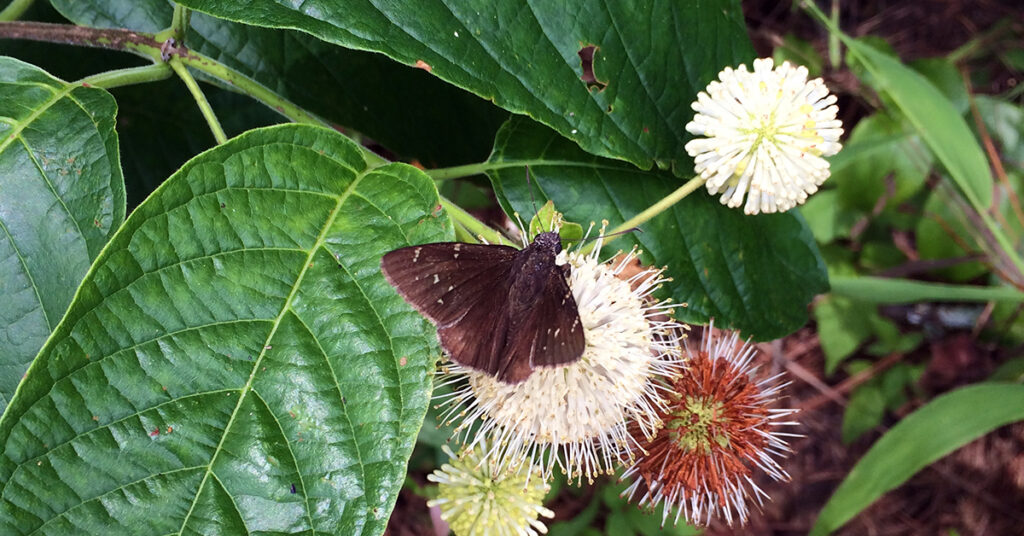
American Beautyberry (Callicarpa americana)
If you only get to pick one, this is the native shrub to add to your garden for vibrant fall color. The purple berries of American beautyberry appear in fall and persist until early winter. This shrub likes moist soil and can grow in full sun to part shade. It is a perennial and is native to the southeastern U.S. You can take soft wood cuttings to propagate American beautyberry.
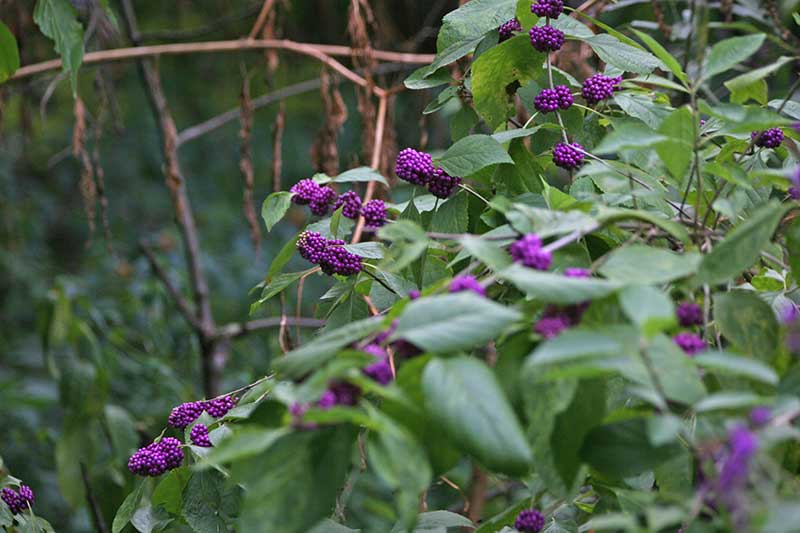
Smooth Sumac (Rhus glabra) or Winged Sumac (Rhus copallinum)
Sumacs produce stunning fall colors as the leaves change from green to gold and orange or red. These native shrubs can grow to 12 feet in height. They prefer full sun and dry to moderate soil moisture. They are native to most of the U.S. and parts of Canada. Plant several sumacs together for the most color impact in fall.
